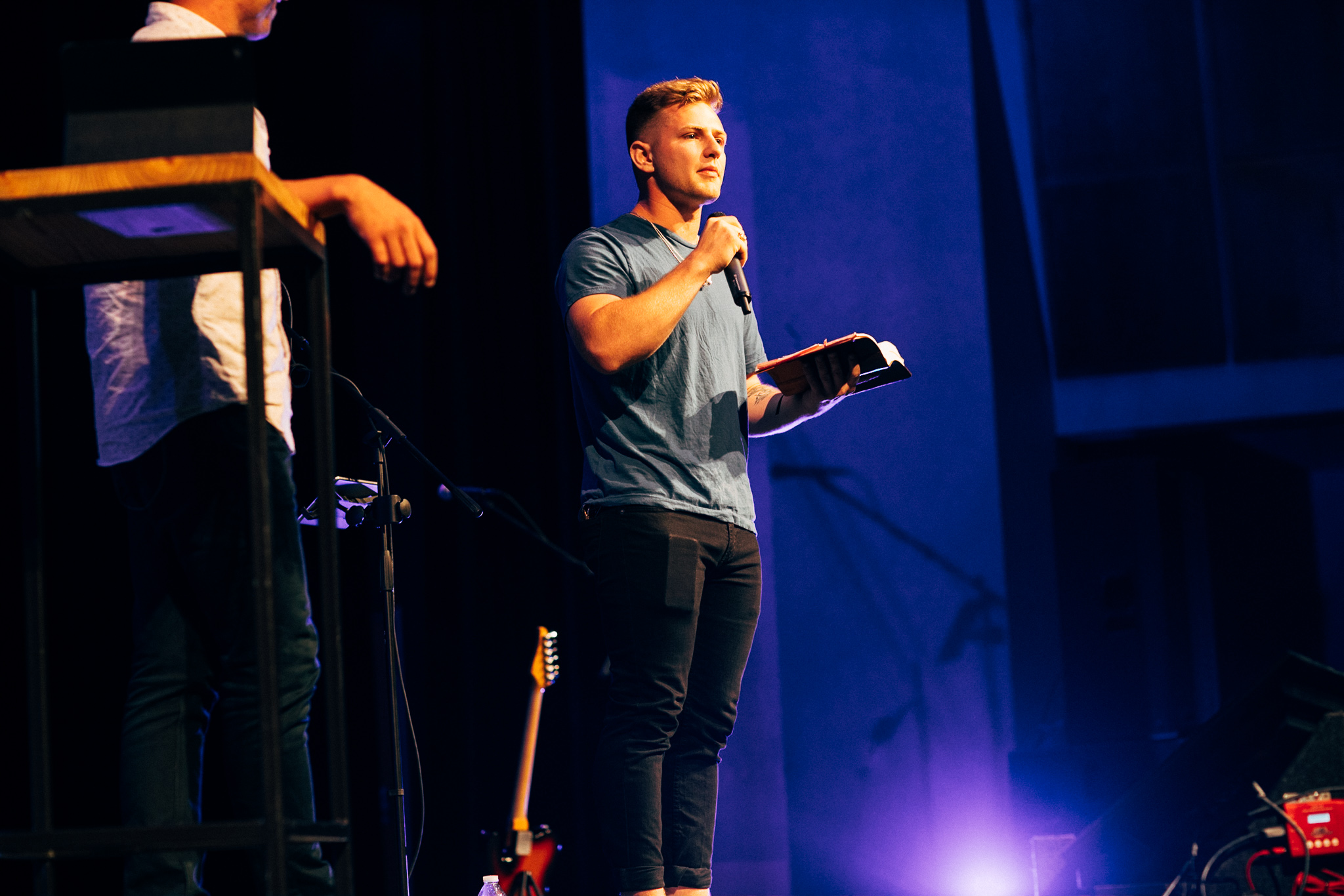Many churches in 2019 have never seen a worship leader articulate coherently from the stage outside of the “ad-libs” that they sing during songs (which aren’t typically coherent, let’s be honest). When I first started leading worship at Grace Bible Church – Creekside, many of my congregants would encourage and affirm me for speaking, but proceed to ask “what do you call that thing, you know, that mini-sermon thing you like to do every Sunday?” That “mini-sermon thing” is called a call to worship, which is an intentional, articulate, biblical encouragement or exhortation intended to redirect congregants’ attention and worship to Jesus. In this post, I will pose three questions that I ask myself anytime I am planning a call to worship.
Question 1: “Who are my people?”
Context is key, my friends. If you are leading disengaged 5th and 6th graders, your tone, content, and delivery should be different than if you are leading for a lively intergenerational congregation. But, it is not enough to know mere demographic and statistical information about your people (unless it’s all you have; i.e. leading at a one-day external event). In order to give an effective call to worship, you’ve got to know who it is that you’re speaking to, which means you need to get off the stage and enter conversations with your people. You are a shepherd! Get to know your flock.
Question 2: “What do my people need to hear?”
If you know your flock, then you will know what they need to hear. Sometimes though, it is appropriate and good to give a call to worship for a person or family. To be clear, that doesn’t mean to call that person or family out by name from stage, or to make public a sensitive situation. That’s not shepherding, that’s hurtful and foolish. I’ll give an example. There was a woman in my congregation whose husband walked out on her and her kids. I knew what a difficult time that her family was having, so I shaped a call to worship that was intended to minister to her, yet it was broad enough to apply to anyone struggling with loneliness, hurt, and feeling abandoned or neglected. Sometimes you need to emulate the Savior and go after the “one” sheep with your words.
Question 3: “How can I build my set around this in a way that is creative and biblical?”
I oftentimes, when appropriate, will come to my set planning process with something God is teaching me or has laid on my heart for my congregation. I try to make sure that exhortation or encouragement not only fits with the sermon well, but if I am able, I want to make the call to worship creatively beautiful and biblically true. An example that I executed recently was this: I felt that the Lord has put it on my heart to lead my congregation in the recitation of the Nicene Creed. As I read through the creed, the song “King of Kings” by Hillsong Worship came to mind as an appropriate song that was confessional in nature and theologically rich. So, I automated our backing tracks in Ableton to trigger towards the last few sentences of the Creed, allowing the instrumental intro to begin as we finished the creed, and allowing the congregation to seamlessly jump into the song after we finished reciting the creed together.
In summary, don’t give a call to worship if you don’t have anything helpful to say. But, I would wager that as we come to know who our congregation is, what they need to hear, and begin to develop a creative lens that learns how to fuse our liturgies with beauty and truth, I believe that the call to worship will help point our people to Jesus in an even more effective way.

